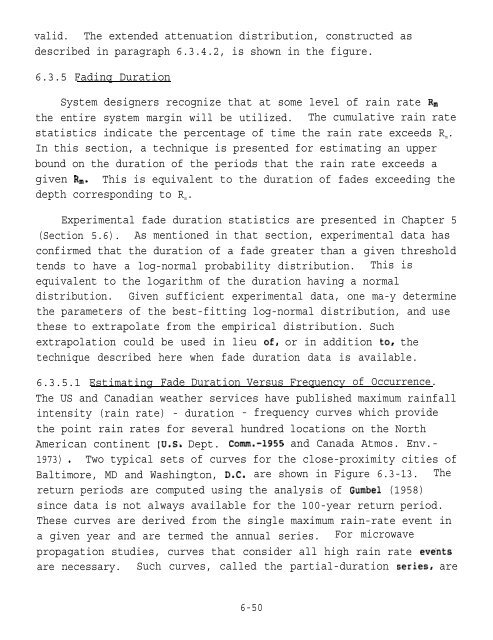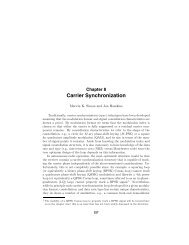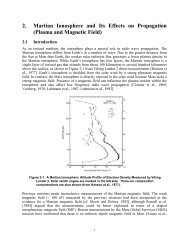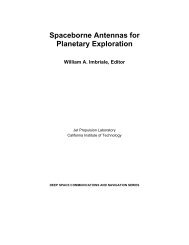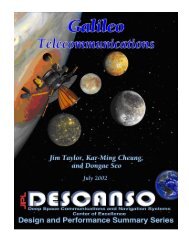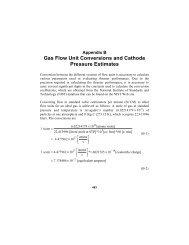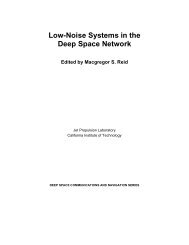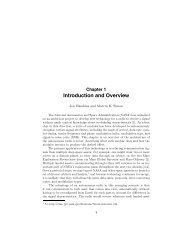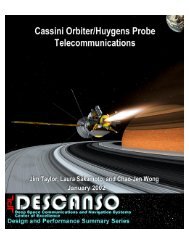Propagation Effects Handbook for Satellite Systems - DESCANSO ...
Propagation Effects Handbook for Satellite Systems - DESCANSO ...
Propagation Effects Handbook for Satellite Systems - DESCANSO ...
You also want an ePaper? Increase the reach of your titles
YUMPU automatically turns print PDFs into web optimized ePapers that Google loves.
valid. The extended attenuation distribution, constructed as<br />
described in paragraph 6.3.4.2, is shown in the figure.<br />
6.3.5 Fadinq Duration<br />
System designers recognize that at some level of rain rate Rm<br />
the entire system margin will be utilized. The cumulative rain rate<br />
statistics indicate the percentage of time the rain rate exceeds R m.<br />
In this section, a technique is presented <strong>for</strong> estimating an upper<br />
bound on the duration of the periods that the rain rate exceeds a<br />
given Rm. This is equivalent to the duration of fades exceeding the<br />
depth corresponding to R m.<br />
Experimental fade duration statistics are presented in Chapter 5<br />
(Section 5.6). As mentioned in that section, experimental data has<br />
confirmed that the duration of a fade greater than a given threshold<br />
tends to have a log-normal probability distribution. This is<br />
equivalent to the logarithm of the duration having a normal<br />
distribution. Given sufficient experimental data, one ma-y determine<br />
the parameters of the best-fitting log-normal distribution, and use<br />
these to extrapolate from the empirical distribution. Such<br />
extrapolation could be used in lieu oft or in addition to~ the<br />
technique described here when fade duration data is available.<br />
6.3.5.1 Estimating Fade Duration Versus Frequency of Occurrence.<br />
The US and Canadian weather services have published maximum rainfall<br />
intensity (rain rate) - duration - frequency curves which provide<br />
the point rain rates <strong>for</strong> several hundred locations on the North<br />
American continent (U.S\ Dept. Comm.-l955 and Canada Atmos. Env.-<br />
1973) ● Two typical sets of curves <strong>for</strong> the close-proximity cities of<br />
Baltimore, MD and Washington, D.C. are shown in Figure 6.3-13. The<br />
return periods are computed using the analysis of Gumbel (1958)<br />
since data is not always available <strong>for</strong> the 100-year return period.<br />
These curves are derived from the single maximum rain-rate event in<br />
a given year and are termed the annual series. For microwave<br />
propagation studies, curves that consider all high rain rate events<br />
are necessary. Such curves, called the partial-duration series~ are<br />
6-50<br />
-


